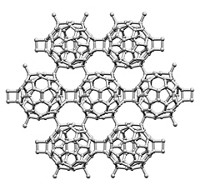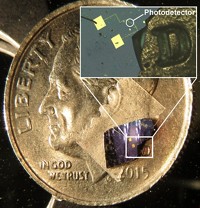Advertisement
Grab your lab coat. Let's get started
Welcome!
Welcome!
Create an account below to get 6 C&EN articles per month, receive newsletters and more - all free.
It seems this is your first time logging in online. Please enter the following information to continue.
As an ACS member you automatically get access to this site. All we need is few more details to create your reading experience.
Not you? Sign in with a different account.
Not you? Sign in with a different account.
ERROR 1
ERROR 1
ERROR 2
ERROR 2
ERROR 2
ERROR 2
ERROR 2
Password and Confirm password must match.
If you have an ACS member number, please enter it here so we can link this account to your membership. (optional)
ERROR 2
ACS values your privacy. By submitting your information, you are gaining access to C&EN and subscribing to our weekly newsletter. We use the information you provide to make your reading experience better, and we will never sell your data to third party members.
2-D Materials
Two-headed molecules template layered crystals
Self-assembled materials can combine properties of layers or yield new ones
by Sam Lemonick
September 18, 2021
| A version of this story appeared in
Volume 99, Issue 34
Two-dimensional materials’ unique electronic and optical properties lead to a number of possible applications, like perovskite solar cells or graphene semiconductors. Stacking different 2D materials like a layer cake can create new materials with useful combinations of properties or even brand-new ones. But stacking materials that are only an atom or two thick can be tricky and time-consuming. Hemamala I. Karunadasa of Stanford University and her colleagues are demonstrating a new approach that allows ions to assemble themselves into those layered crystals in water (Nature 2021, DOI: 10.1038/s41586-021-03810-x). The researchers borrowed a method for making perovskites: using organic molecules with positively charged functional groups, such as ammonium, as templates. Their innovation was adding a second functional group—for instance, a negatively charged sulfonate—on the molecule’s other end as template for a second layer. The organic molecules remain embedded in the crystal structure and can hold layers closer or farther apart in ways that affect the materials’ properties. The group demonstrated nine heterostructured materials using the method, which they characterized using X-ray diffraction. One example (shown) stacks perovskite and lead-chloride layers and has optical and electronic properties not seen in pure perovskites. Karunadasa says many combinations should be possible by changing the template functional groups, and the technique should work for large-scale manufacturing, but has not been optimized yet.




Join the conversation
Contact the reporter
Submit a Letter to the Editor for publication
Engage with us on Twitter